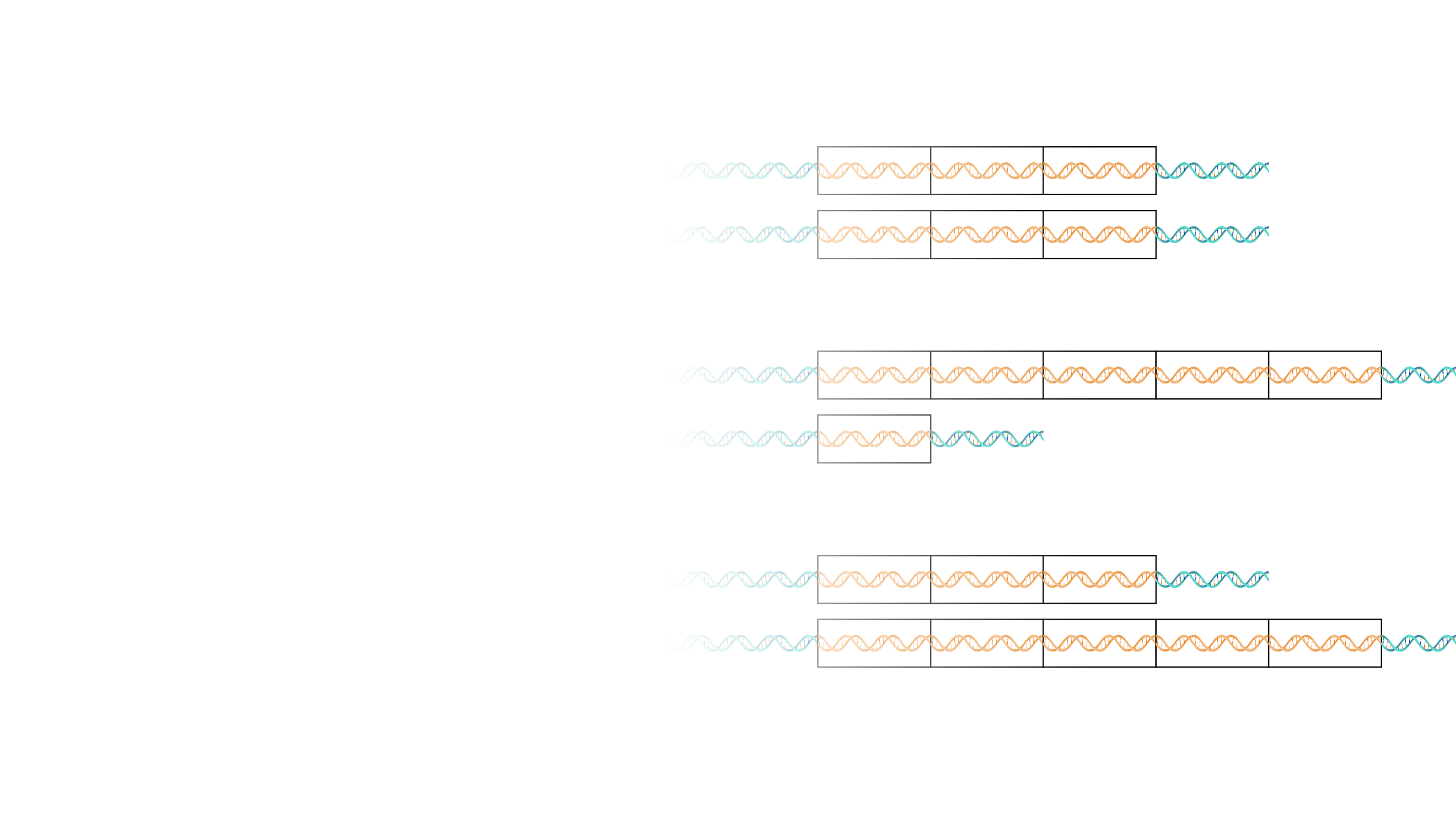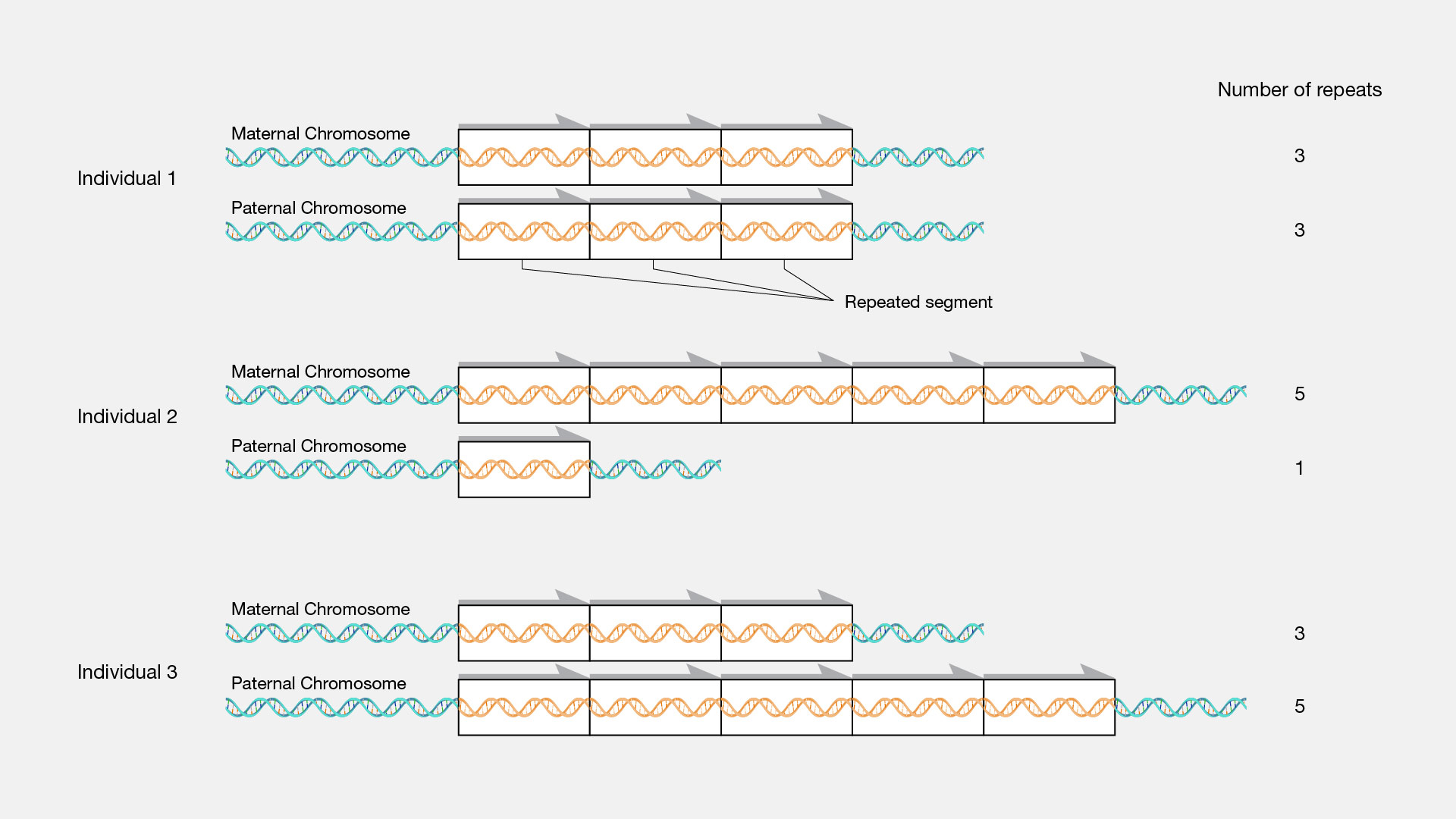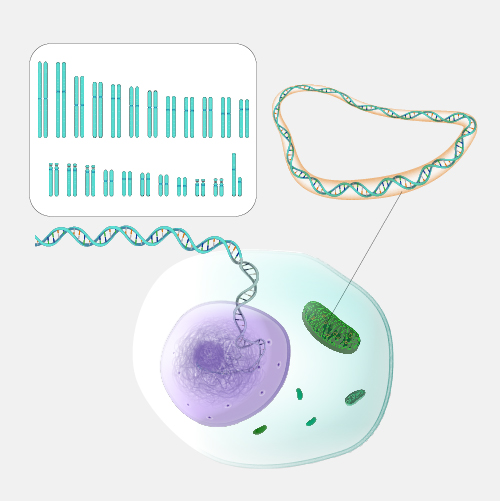
Copy Number Variation (CNV)
Definition
Copy number variation (abbreviated CNV) refers to a circumstance in which the number of copies of a specific segment of DNA varies among different individuals’ genomes. The individual variants may be short or include thousands of bases. These structural differences may have come about through duplications, deletions or other changes and can affect long stretches of DNA. Such regions may or may not contain a gene(s).

Narration
Copy number variation, CNV. Changes in the number of copies of small sections of our genomes can have big consequences. One interesting example is a gene called amylase. This gene is important for digesting starchy foods like potatoes or grains. Scientists found copy number variations of the amylase gene in different groups of people. People from places where starchy foods were historically very important usually have more copies of the amylase gene than people from backgrounds where starchy foods were less common. Places where meat and fish were more important parts of the diet relative to starches. This suggests that ancient people who had more copies of the amylase gene were able to get more energy from starchy foods, and so were able to thrive in regions where starchy food sources were important. And perhaps out-compete people in those regions that had fewer copies of the amylase gene. This is one of many ways copy number variation can have important effects.





